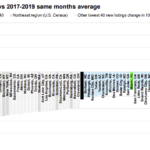
Imagine a scenario where you go on a 100-year vacation and want to leave behind some wealth when you come back. You decide to fill a safe to store the following:
- Gold bars
- A stack of 100 dollar bills
- Bitcoin in cold storage
What do you expect to find when you return from a century-long absence?
The gold bars would remain in good condition. The $100 bill would physically deteriorate and its purchasing power would be dramatically reduced, potentially rendering the note worthless.
What about Bitcoin? How much is Bitcoin worth?
The answer depends on how the network performed during your long absence. If others were actively trading, miners would secure the network and your Bitcoin would be safe and valuable. If everyone else kept their coins in cold storage and joined you during your 100-year absence, transaction fees would plummet, miners would go out of business, the network would decline, and coins would become worthless.
In other words, the backbone of the Bitcoin network is the various miners who spend their time and resources to process transactions and maintain the integrity of the blockchain. Miners are rewarded through transaction fees and a predictably decreasing block reward, so transactions must be carried out in order for miners to have the funds to secure the network.
The ethos of Bitcoin has been that, from the beginning, anyone who uses the network must commit to it – having ownership or a stake does not confer any special privileges. Proof of Work versus Proof of Stake.
Unfortunately, HODLers are not working. They are counting on others to compensate miners so that the value of the HODLer’s stake is maintained. As designed today, perhaps unconsciously, HODLers are not following the spirit of Bitcoin.
Work while HODLing
The question is: “How do we secure the network (i.e. pay miners) while HODLing?”
We believe the answer is to implement a HODL_FEE that compensates miners for dormant addresses.
In keeping with the spirit of Bitcoin, a HODL_FEE will be charged.
(a) Addresses that have not had any coins move in or out for the last 52,500 blocks, which is one-quarter of the halving period (approximately one year), and
(b) An amount equal to 50% of the average transaction fees over the past two weeks. The HOLD_FEE is therefore reset in a manner similar to the difficulty adjustment.
There are two reasons why the HOLD_FEE is set to 50% MTF: first, addresses can avoid the HODL_FEE by making simple transactions, so we set the HODL_FEE based on the current transaction fee, and second, the HODL_FEE is set to 50% MTF to allow miners to prioritize current transactions and perform HODL_FEE transactions in the remaining block space.
While you can argue in good faith to increase or decrease the duration and amount of the HODL_Fee, these parameters make intuitive sense.
Benefits of HODL_FEE
Aligned incentives – In addition to block rewards and transaction fees, HODL_FEE adds another mechanism to reward miners, encouraging them to maintain the integrity of the network even when transaction volume plummets. HODLers benefit the most as their coin remains a valid store of value.
Cleaning the dust – blockchain has Dust Addresses with too little sats to execute a transaction. By one estimate, there are about 120 million addresses with less than 1,000 sats (about $0.65), and the average transaction fee during a relatively quiet 24-hour period in May was 3,100 sats (about $1.90). With HODL_Fee, all addresses over 120 million will be zeroed out, and roughly 310 million Bitcoins (about $20 million) will be paid to miners for securing the network.
There are another 20 million or so addresses with between 1,000 and 10,000 sats ($0.65-6.50) and about 1,000 Bitcoin (about $65 million) that will ultimately be used to secure the network.
There has been a massive cleanup of the network while the circulating supply has only increased slightly.
Unlocking Lost Coins – Unfortunately, coins easily get locked in addresses when their owners die, lose interest, or forget their keys. The HODL_FEE allows some of these coins to be put back into circulation, but it does so very slowly. If a dormant address holds 1 BTC and the HODL_FEE is 2,000 sats, it will take 50,000 years for the dormant address to drop to zero, giving the owner plenty of time to wake up from their coma and get their coins back.
Test your keys – A nice side benefit of HODL_FEE is that it encourages holders to use their addresses, i.e. at least once a year to test that they remember their keys. This seems especially important in multisig scenarios.
Encourage network usage – HODL_FEE increases network usage by incentivizing holders to stack and spend sats. Increasing network usage ensures miners are properly rewarded and Bitcoin remains a store of value.
Arguments Against HODL_FEE
Introducing Taxes – HODL_FEE seems anti-libertarian since it is designed to force individuals to either behave in a certain way (i.e. keep saving/spending) or pay a tax. Nobody likes taxes, and nobody likes the idea of being taxed just for existing.
However, quarterly or annual custody fees are very common for bank and brokerage accounts, and HODL_FEE is no different.
Most importantly, the spirit of Bitcoin is Proof of WorkThere is no benefit to ownership alone: Bitcoin owners cannot rely on others to secure the network and ensure that Bitcoin remains a stable store of value.
Reduced anonymity – The HODL_FEE can reduce anonymity by encouraging individuals to trade (where they may be monitored), consolidate their holdings into fewer addresses (where they are more likely to be linked to the owner), or store their coins on exchanges (where they do not need to pay the HODL_FEE due to the high trading volume).
But anonymity always comes at a cost. People can build tall fences, travel to remote locations, use VPNs, etc., but each of these actions has a cost. For HODLers, the cheapest and easiest way to maintain anonymity while ensuring the integrity of the network is to simply HODL and withdraw the HODL_FEE from their address each year.
Creation of Unnecessary Transactions – HODL_FEE creates millions of transactions, either through the actual HODL_FEE or by encouraging individuals to stack and use it. HODL-FEE transactions are very light and easy to compute, and the incentives are designed for miners to process current transactions before the HODL-FEE transaction.
Either way, with millions of new transactions occurring, the simplest solution is to create more block space so that transactions can be processed efficiently and miners can earn more for securing the network.
Final thoughts
The spirit of Bitcoin Proof of WorkHODLers also need to work.
HODL_FEE:
- Fair
- Intuitive and easy to understand
- Easy to program and calculate
- Encourage accumulation and spending
- Rewarding miners for maintaining the integrity of the network
- Helps maintain the value of Bitcoin
Anyone ready to write a BIP?
This is a guest post by Bob. The opinions expressed here are entirely Bob’s own and do not necessarily reflect the opinions of BTC Inc or Bitcoin Magazine.







